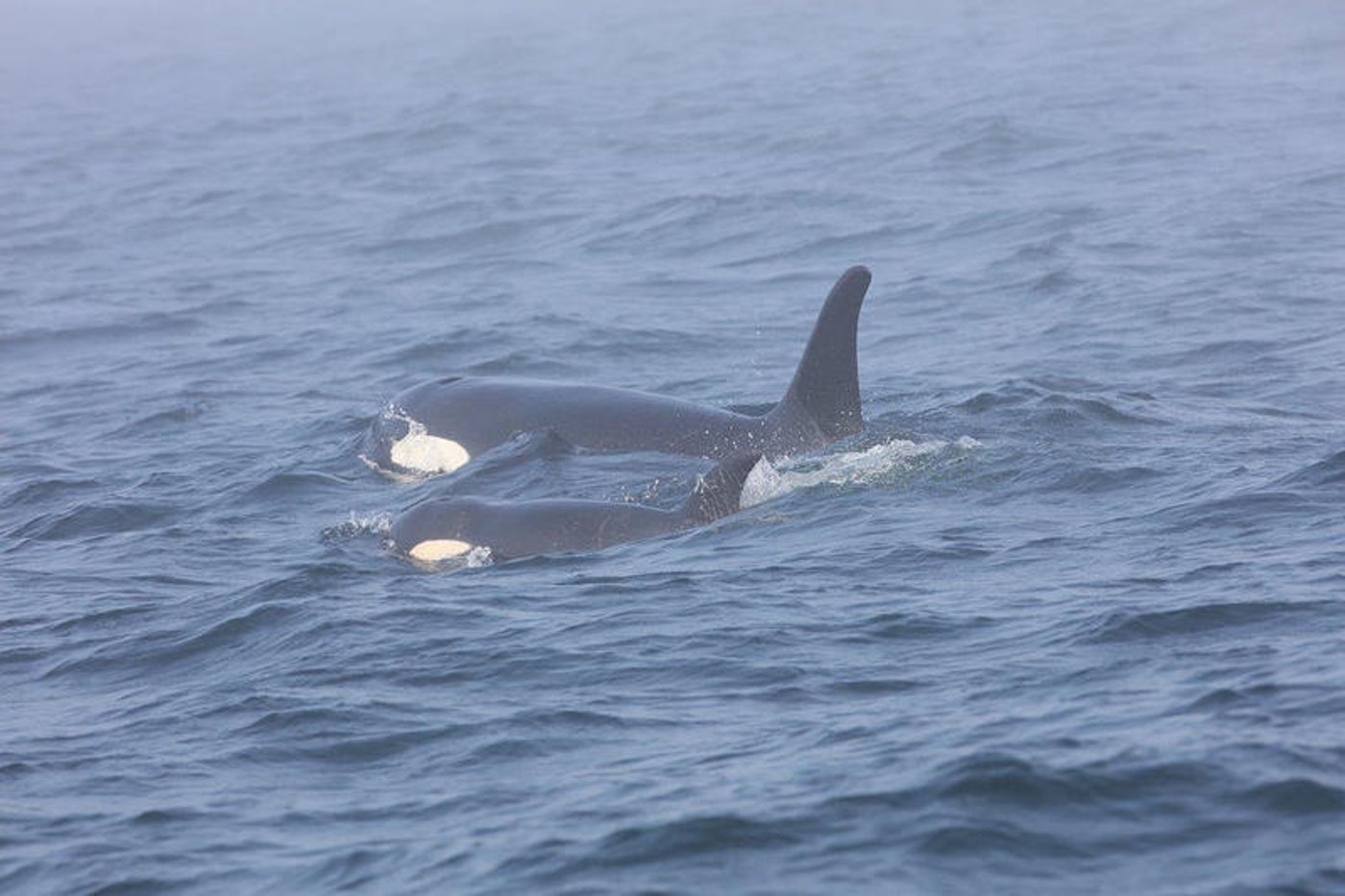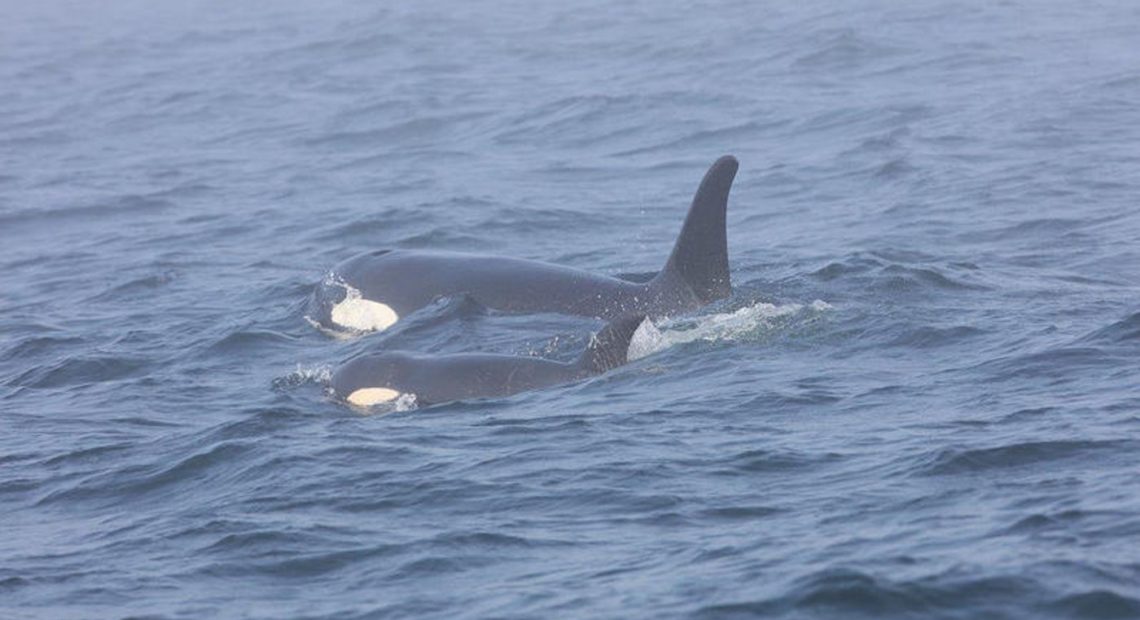
Efforts Continue To Save ‘Critically Endangered’ J-50 Orca, But It May Be Too Late
Listen
Officials in Canada and the U.S. have been hatching a plan to temporarily capture and treat an emaciated orca. The young whale known as J-50 hasn’t been spotted in nearly a week and could already be dead, according to researchers with the Center for Whale Research.
Officials say they hope to avoid such a last-ditch rescue effort and would attempt it only if J-50 loses all contact with other orcas or beaches herself, and no other options are available.
“This is an incredibly challenging undertaking,” Lynne Barre with the National Oceanic and Atmospheric Administration told reporters Wednesday. “Our overarching, overriding objective is to provide her with the best chance of survival and make sure she can be part of her family group, and we won’t put other whales at risk to do that.”
Barre said NOAA’s laboratory in Manchester, Washington, off the southern end of Bainbridge Island, has floating net-pens that could house the young orca while she is being examined and treated.
Veterinarian Joe Gaydos with the SeaDoc Society called J-50 “the thinnest killer whale I’d ever seen.”
“This is a very sick whale,” he said.
J-50 is emaciated to the point where blubber around the base of her head has shrunken, in a condition sometimes called “peanut head.”
Gaydos said 11 of 13 orcas that had “peanut head” in the past did not survive.
Yet J-50’s specific ailment or ailments remain unknown.
Efforts to diagnose the whale from afar, by taking breath and scat samples, have proved inconclusive, as have efforts to treat her with antibiotic darts.
Capturing the whale could allow veterinarians to conduct blood and hearing tests and ultrasound and endoscopic exams. The goal would be to return J-50 to health and to her family as soon as possible.
Officials and whale advocates said the capture would be stressful for J-50 and any others whales that witness it.
“Any time you capture a wild animal, there’s always risk of trauma and stress,” Gaydos said.
The nonprofit Orca Network urged its members to contact NOAA with their concerns about possible harm of a capture attempt.
“J-50 is so emaciated, and has been sick for so long, the odds of her surviving the stress of a capture and treatment for an as yet unknown disease seem small,” the Whidbey Island-based group’s website states.
The group said that if J-50’s family is within 10 miles of J-50, they will hear her distressed calls.
NOAA and Canadian officials said they would only capture J-50 if she were far away from other orcas.
Rarely does one human being’s health get as much media, government or public attention as J-50’s has this summer.
But with just 75 southern resident killer whales left in the waters of Washington and British Columbia, officials say each individual matters for the survival of the population.
“It really is about the health of J pod and southern resident killer whales in general,” Andy Thomson with Canada’s Department of Fisheries and Oceans said. “The return of J-50 to the wild, should a rescue be necessary, will be the primary goal for us.”
Researchers spotted J-50’s family, including her mother, J-16, near the mouth of Canada’s Fraser River on Tuesday, off the south end of Lopez Island in the San Juans on Wednesday and near Race Rocks, south of Victoria, on Thursday.
But J-50 was not with her family. She has not been seen since Friday, Sept. 7.
“We saw all of the J-16s yesterday charging ahead of J-pod, but no J-50,” SeaDoc Society veterinarian Joe Gaydos emailed KUOW on Thursday. “My heart sank.”
Long-time researcher and activist Ken Balcomb with the Center for Whale Research in Friday Harbor said any rescue effort may be moot by now.
“I think she is dead,” he said in an email to KUOW Wednesday.
“I do not think that J-50 has been seen since last week, although we have seen her family numerous times,” Balcomb said.
“I hope that I am wrong,” he said.
Public meetings on the plan to rescue J-50 are scheduled at 7 p.m. Saturday at Friday Harbor High School on San Juan Island and 1 p.m. Sunday at the University of Washington in Seattle.
Related Stories:
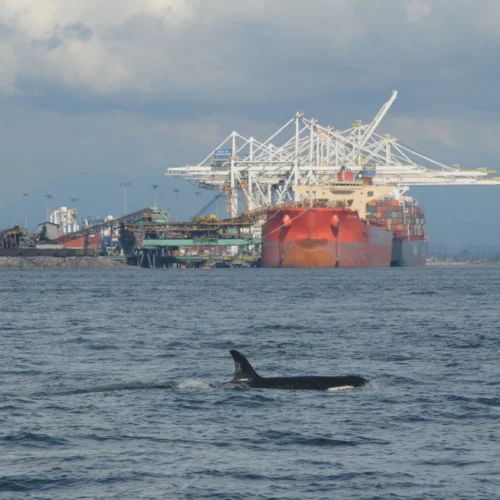
Captains of big ships eased up on the throttle during trial slowdown to help endangered orcas
The majority of captains of big commercial ships entering and leaving Puget Sound are cooperating with a request to slow down temporarily to reduce underwater noise impacts to the Pacific Northwest’s critically endangered killer whales. The duration of the experimental slowdown – modeled on a similar project in British Columbia – will be extended into the new year, organizers announced after a status report and celebration on the Seattle waterfront Friday.
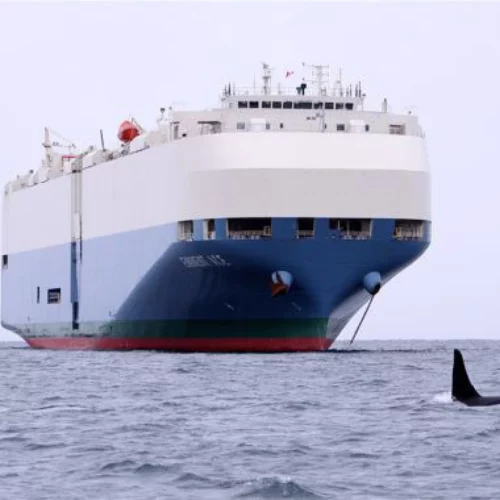
Reducing collisions between ships and whales? There’s apps for that, but they need work
Fortunately, it doesn’t happen very often in the Pacific Northwest that ships collide with whales. But when it does, it’s upsetting, tragic and the whale probably dies. Three separate teams have developed smartphone-based systems that can alert commercial mariners to watch out, slow down or change course when whales have been sighted nearby. A recent ride-along on a big container ship demonstrated that real-time whale alerts are still a work in progress.
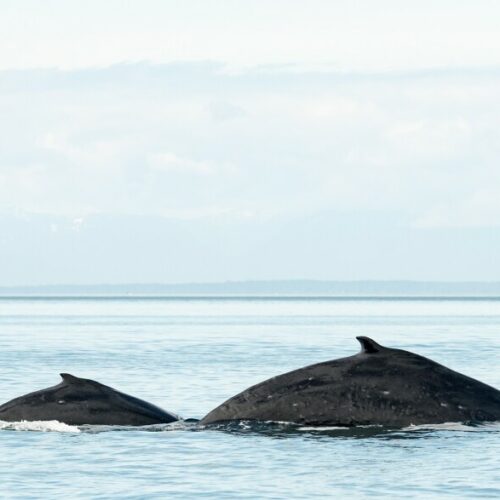
Record Numbers Of Bigg’s Killer Whale Sightings And Humpback Calves In Salish Sea
Whale watchers have spotted a record number of humpback calves in inland Pacific Northwest waters this season. There was also a record streak of Bigg’s killer whale sightings that just ended, according to a local whale research nonprofit. Those observations offer some good news to offset the ongoing concern about the survival of the Northwest’s iconic, but critically endangered resident orcas.

